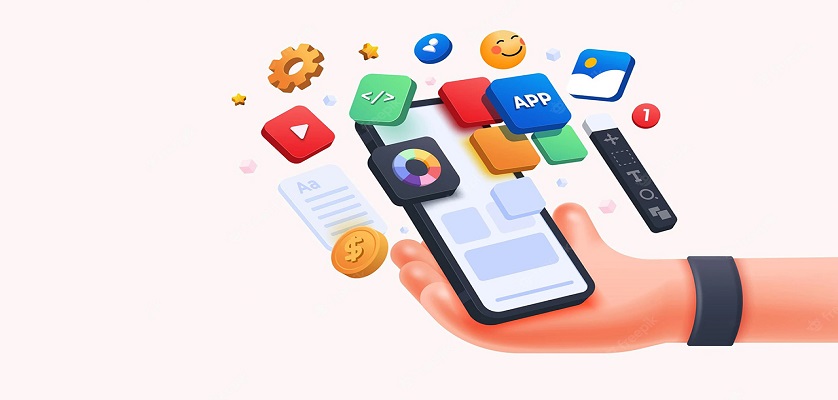In the digital age, device operations have come an integral part of our lives, changes in the way we communicate, work and interact with the world around us. Whether you are an experienced inventor or an entrepreneur, strategy of the app development process, estimating costs, and managing time boundaries are essential aspects of bringing your idea into reality. In this companion, we will take you through each step of the app development, Giving the information about included costs and the expected timeline of the process.
Strategy of App Development Process
1. Idea and Conceptualization
Every successful app begins with a brilliant idea. this phase includes many stages of thinking, identifying market gaps, and conceptualizing a unique app concept. Research is key here – analyze the competitor’s strategy, target audience needs, and trends to refine and update your idea.
2. Market Research
Before diving into development, conduct thorough market research. This step helps you validate your idea, understand your potential users, and identify any challenges or opportunities in the market.
3. Make a Wireframing
Once your idea is solidified, create a detailed plan and wireframe. A wireframe is a visual representation of your app’s user interface (UI) and user experience (UX). It serves as a blueprint for your app’s layout and functionality.
4. Design and UI/UX
The visual appeal and user-friendliness of your app are crucial for attracting and retaining users. Design your app’s interface and user experience, ensuring it’s intuitive, aesthetically pleasing, and aligned with your brand identity.
5. Development
This is where your app comes to life. Depending on your target platforms (iOS, Android, Microsoft ), choose useful programming languages and frameworks. Develop the frontend, which includes UI elements, and the backend, which handles data storage and app logic.
6. Testing and Quality Assurance
Thoroughly test your app for bugs, mistakes, and usability issues. Quality assurance (QA) ensures a smooth user experience and minimizes post-launch problems.
7. Post-Launch and Updates
After the launch, device user feedback and app performance. Regularly update your app to fix bugs, introduce new feature according to user and please update on time to fix bugs.
Make A Estimate App Development Costs
App development costs can vary widely based on factors such as complexity, features, platforms, and development approach. Here are some possible cost components:
1. Development Team
UI/UX Designers: Create the visual elements and user experience – estimated cost: $5,000 – $15,000 per designer.
Developers: Build the app – estimated cost: $10,000 – $25,000 per developer.
Quality Assurance: Test the app thoroughly – estimated cost: $5,000 – $10,000.
2. Technology and Tools
App Development Platforms: Costs for development environments and tools – varies widely based on your choices.
Backend Development: Costs for setting up servers, databases, and APIs – estimated cost: $5,000 – $20,000.
3. App Features
Basic Features: Core functionalities – estimated cost: $5,000 – $15,000.
Advanced Features: In-app purchases, social integrations, real-time updates – estimated cost: $10,000 – $30,000.
4. Maintenance and Updates
Regular Updates: Budget for ongoing maintenance – estimated monthly cost: $1,000 – $5,000.
5. Other Costs
App Store Registration: One-time fee – Apple App Store: $99/year, Google Play Store: $25 (lifetime).
Set the App Development Timeline
App development timelines can vary based on complexity and team size. Here are some general time:
- Idea and Research: 2 – 4 weeks
- Wireframing: 2 – 6 weeks
- Design and UI/UX: 4 – 8 weeks
- Development: 8 – 16 weeks
- Testing and QA: 4 – 8 weeks
- Deployment and Launch: 2 – 4 weeks
NOTE: Keep in mind that unexpected challenges or feature additions can extend these time limits.
Conclusion:
Bringing your app idea into reality is exciting and joyful. By understanding the app development strategy, and expected costs, and managing time limits, you can control this journey more effectively. Remember that every app is unique, so adapt these guidelines to suit your specific project. With great planning, a dedicated and best team, and a user-focused approach, you’ll be fine on your way to creating an app that wins the hearts of many users worldwide.

